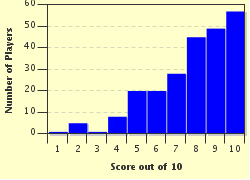Quiz Answer Key and Fun Facts
1. A bloody massacre in 2001, in which the crown prince shot and killed his parents, the king and queen, along with several other members of the royal family before finally turning the gun on himself and left the monarchy of this Himalayan kingdom destabilized. King Gyanendra who ascended the throne after his brother's death was ultimately deposed in 2008 after which the monarchy was formally abolished. Which former Hindu kingdom fits this description?
2. Iraq has been a part of various empires and kingdoms over the years. However, in its present day form, the country was only ruled by a monarchy for a brief period in the 20th century. What led to the overthrow of the Hashemite dynasty that ruled Iraq from 1932 to 1958?
3. Which short lived Latin American empire lasted for barely 67 years under the rule of Dom Pedro I and his son Dom Pedro II in the 19th century?
4. This small group of islands was a monarchy for around a hundred years from the late 18th century to the late 19th century. Which Pacific island group had its queen regnant, Queen Lili'uokalani, deposed in 1893 - the first in a series of events that eventually led to its becoming a US state?
5. Haile Selassie I was the last emperor of which African empire dating back to the 12th century, with some claiming that it could trace its origins to Biblical times?
6. This empire was formally recognized internationally in the early 18th century following the Treaty of Nystad. Less than two centuries later, the then emperor Nicholas II was forced to abdicate due to a large scale revolution. Soon after, the emperor, empress, their children and a few servants were killed by the revolutionaries. Which country did this occur in?
7. Often regarded as the 'Birthplace of Democracy', this European kingdom was established after the country gained independence from the Ottoman Empire. Which European country had Otto of Wittelsbach, the Prince of Bavaria, ascend the throne in 1832 as its first king?
8. Alexander John Cuza was the last prince of which East European principality that was eventually merged with Wallachia to form the kingdom of Romania?
9. The Chinese empire was ruled by various dynasties since its establishment in 221 BC by Qin Shi Huang. To which dynasty did the 'Last Emperor' Puyi belong?
10. Toghan Temur Khan is regarded as the last ruler of which Asian empire, that at its height, stretched from Sea of Japan right up to Eastern Europe, forming the largest contiguous land empire of history?
Source: Author
zorba_scank
This quiz was reviewed by FunTrivia editor
bloomsby before going online.
Any errors found in FunTrivia content are routinely corrected through our feedback system.

